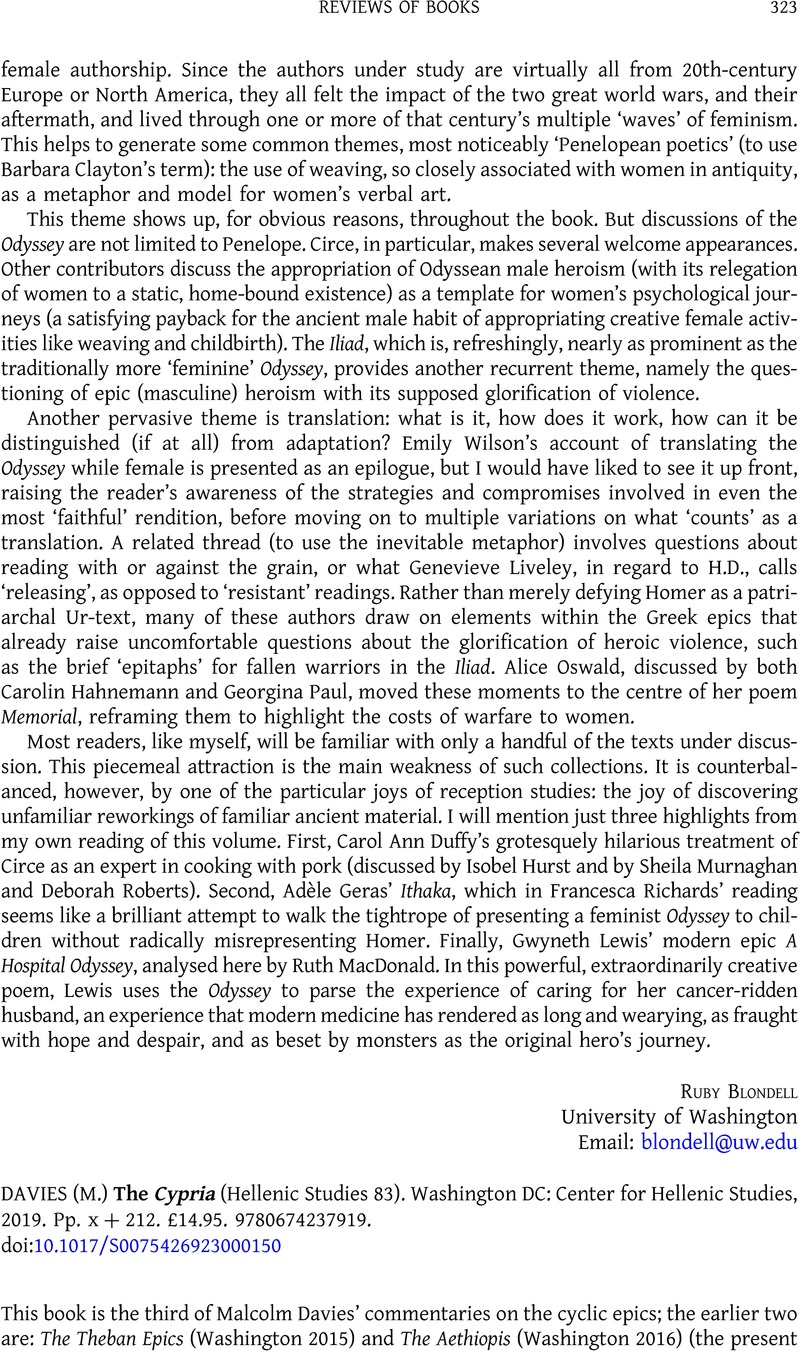No CrossRef data available.
Article contents
(M.) DAVIES The Cypria (Hellenic Studies 83). Washington DC: Center for Hellenic Studies, 2019. Pp. x + 212. £14.95. 9780674237919.
Review products
(M.) DAVIES The Cypria (Hellenic Studies 83). Washington DC: Center for Hellenic Studies, 2019. Pp. x + 212. £14.95. 9780674237919.
Part of:
Literature
Published online by Cambridge University Press: 09 May 2023
Abstract
An abstract is not available for this content so a preview has been provided. Please use the Get access link above for information on how to access this content.

- Type
- Reviews of Books
- Information
- Copyright
- © The Author(s), 2023. Published by Cambridge University Press on behalf of the Society for the Promotion of Hellenic Studies


